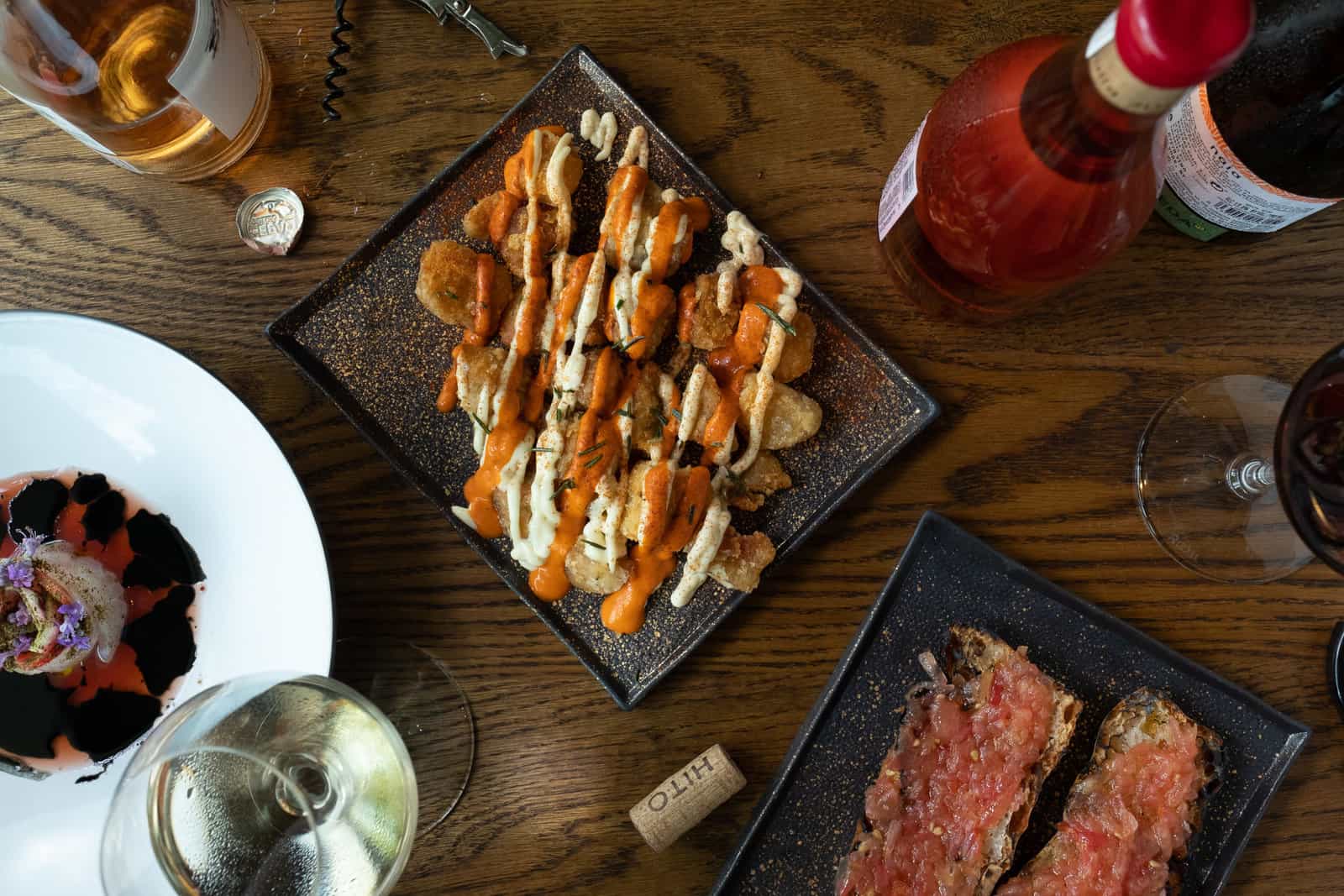
When we think of food and wine pairings, we think about the foods we want to eat, the wines we want to drink, and ideally, a resulting connection between the two that is so perfect that we are launched into a reverie that may no longer have do with what’s in our mouths.
Integral to the food and wine pairing experience is something we don’t think about as much: community. “Community” is the connection to one another, but equally important, to place and to the people who bring that place to our table. The very best food and wine experiences cannot be separated from the makers of the foods and the wines we’re enjoying, the places they come from, nor the people we’re with.
And so it is that in Spain’s Ribera del Duero and Rueda winegrowing areas, where winemakers have been making wines that have stood the test of time much like the old vines from which 45 percent of these regions’ grapes come, a glass of wine represents an instant connection to place and to people.
Castles and Community
A sip of a Ribera Tempranillo – the king of grapes in this region – calls to mind a place where castles — castillos – dot the land much like the grapevines. These castles represent Spain’s history and an intrinsic power that travels all the way to the glass, which is why the roasted meats of the region – in particular, the baby lamb known as lechazo and the suckling pig called cochinillo – or the ones we make in our own backyards call for this wine. The connection doesn’t stop there. Gathered around a table, we are doing more than drinking this exceptional wine – we are also taking a taste of history while soaking in the joys of community.
Although Spanish foods of all kinds find their way naturally with this regional Tempranillo, whether a traditional stew from Madrid, a Valenciana paella, chorizo, Catalan sausage, cheeses, and so much more, this wine is quite content on this side of the Atlantic too.
Wedges of Manchego and Vermont cheddar, roasted Marcona almonds, thin slices of Ibérico ham or prosciutto and maybe some sausages from your local specialty food shop are a great start. A bottle of Reserva Tempranillo helps cap things off, though any Ribera del Duero Tempranillo will do. Because of this grape’s wide range of flavors from forest floor to raspberry, vanilla, and spice to cedar, and its firm structure and acidity, Ribera Tempranillo loves most foods and vice-versa.
There are distinct styles of this region’s Tempranillo and of the Rueda region’s white wines that are useful to know both for pairings and for a fundamental understanding of what makes these wines so special. Luckily for wine and food lovers, the Ribera and Rueda officials make that easy.
It’s all about the label
Ribera del Duero became a Designation of Origin (DO) in 1982 and Rueda two years earlier. In both cases, wines from these regions reflect their DO status on their back labels. No back label, no official designation. Depending which region, they also tell us the age category of the wine, the dominant grape(s), and more. In Ribera, this means that that bottle of Reserva Tempranillo you’re planning to sip with your cheese feast has spent at least one year in barrel and at least two years in the bottle before the cork can ever be pulled. The Crianza designation indicates a younger wine and so on. All designations indicate a minimum of 75 percent Tempranillo.
In Rueda, the wine label speaks to several things: a minimum grape content of either Verdejo or Sauvignon Blanc, whether the wine is sparkling, aged, or sweet, as well as certain specifications applying to each of those. This variety of styles may explain why Rueda wines and Verdejo, in particular, are so food-friendly.


The cool cat
Sometimes called the lioness of grapes for its understated power and yet silkiness as well as its geographical home in Castilla y León (“lion”), a Rueda Verdejo is nearly inseparable from the Spanish table. In fact, it’s no accident that it’s Spain’s number-one-selling white wine. It goes with a wide variety of foods no matter which part of the world it’s being poured.
In fact, you don’t have to be in Spain to enjoy a Verdejo. Think of it as the United Nations of white wines. It finds companionship with a wide variety of foods no matter where they’re from. American cheeses like Cowgirl Creamery’s Mt. Tam (or the locally-made brie-like cheese in your neck of the woods), the goat cheese you picked up at your farmer’s market, and mountain cheeses like Gruyére, Comté, Uplands Cheese Pleasant Ridge Reserve, and Jasper Hill Farm’s Alpha Tolman are Verdejo-loving cheeses among many others.
Verdejo loves all kinds of foods beyond cheese too. That fish you’re about to put on the grill? Check. The buttery sauce you’re going to spoon onto that? Check. The herby bread and crackers you got from your local baker? Yep.
Or take Spanish conservas or tinned fish. This may not be the first thing you think of when you think of wine pairings, but categorically these will very likely be the best versions of fish in a can you’ll ever taste – particularly the tuna. Packed in buttery Spanish olive oil, the meaty tuna takes on a richness and just-right tuna taste that makes it impossible not to eat directly from the can. Besides, who’s looking?
Enjoyed with a Verdejo, whether the so called joven or young, bright, and crisp style of the wine or the lees-aged style with a richer mouthfeel – an instant tie is created between the fishermen, the winemakers, and your own palate. In that moment, conscious or not, the food and wine have come together and so too your understanding of something both connected and delicious.
The same is true with meaty olives. An acid driven wine like Verdejo will cut the richness of the olives and leave you wanting more – all the more reason to also grab Spanish picos – breadstick-like crackers (or breadsticks themselves if you’d like) – and paper-thin slices of Jamon Serrano, prosciutto, locally-made ham, and salami. A slightly aged goat cheese like Humboldt Fog or MitiCaña® Caña de Cabra from Spain completes the spread – a spread that reminds you of two distinct fall harvests, grapes and olives, the care and diet of the animals, and of the people who lovingly tend to each step of the process from root to table. Because you may be sharing these very sharable provisions, the context is one of togetherness and again, connection – connection to wine, to region, and to each other. In the end, the perfect food and wine pairings don’t get better than this.




